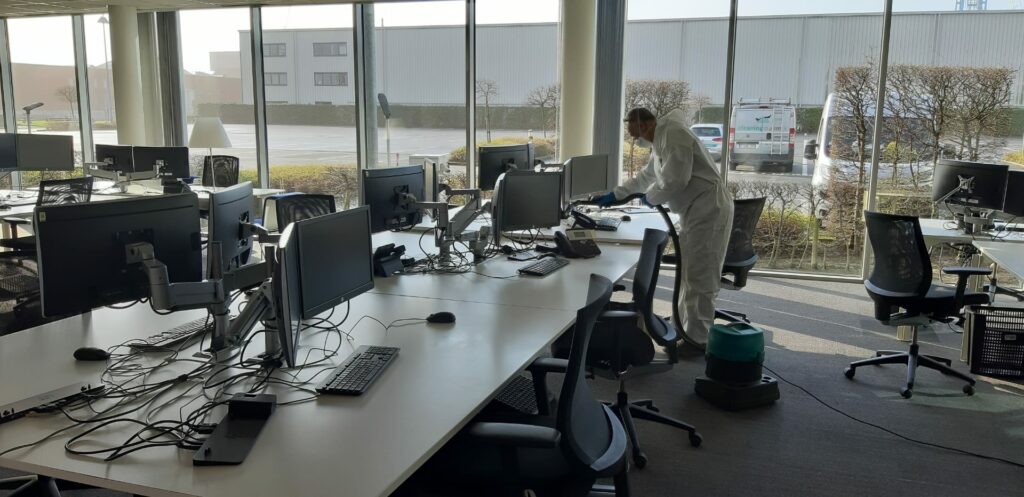Back to the office after months of teleworking due to the corona pandemic. How do you deal with this as a company? Do you simply return to the pre-Covid rhythm? Or do you look for a new balance? A new balance that benefits both you as an employer and your employees? There are plenty of options, depending on where you place the emphasis. Whatever choice you make, it is important that you talk it over with your facilities partner.
Back to the office as it was before corona
A first option is to pretend that corona never existed, so to speak. The pandemic is (almost) over, so everyone is back to commuting every day.

The complete opposite is the second possibility. Some companies have realised that an office is no longer necessary. They opt for full-time teleworking.
Clear division of time between home and office
Besides these two extremes, there are many intermediate forms. Many companies, when returning to the office, propose a combination of teleworking and working in the office. In doing so, they can use a time allocation that creates clarity for everyone.
For example:
- Day to day: all meetings are organised on 2 or 3 days per week. Employees spend these days in the office. The remaining days, they work at home.
- Half days: if, for example, employees need to be in the office every morning (e.g. for a standby shift), you can choose to let them work from home in the afternoon. The many transfers – as many as in a full-time office job – are a clear disadvantage of this system.
- Week to week: one week at the office, the other week at home. This is a convenient system for co-parenting employees.
- Month by month or season by season: for certain projects, some employees are needed in the office for longer periods. Or, as a company, you may choose not to send your employees on the road unnecessarily during the harsh winter months.

Distribution based on tasks or functions
For some employees, it is more difficult to apply a fixed time schedule. Their range of tasks or their function requires more flexibility. New variants occur this way, for example:
- task-based: some tasks can be carried out quietly at home, others require presence in the office.
- function-based: some jobs require more presence in the office than others.
- team-based: depending on the tasks, the presence of a full working group in the office is required. Depending on which work groups a staff member belongs to, he will work more or less from home.
The number of meetings or collaboration moments plays a major role in these distributions. Online meetings certainly proved their worth during the corona pandemic. They will undoubtedly continue to exist. But they have their limitations. Especially when it comes to meeting or collaborating with larger groups.
Listen to your employees’ wishes
At the end of the day, you can also place the well-being of your employees at the heart of the division between home and office work. If doing so, you base your new approach on:
- motivation: each employee decides for himself which tasks he can perform best where.
- health: can an employee complete certain tasks at home with less stress? Then don’t force them to come to the office for it.
- family: employees are given the freedom to adapt their choice of workplace to the needs of their children or a family member in need of care.
With these divisions, the key lies largely in the hands of the employees. A good follow-up and clear communication are therefore necessary.
Back to the office or teleworking? Consultation with your facilities partner
When returning to the office, there is not only communication needed between employer and employee. As a company, you also discuss the new situation with your facility services provider. Good consultation leads to an optimisation of the cooperation.
Example: in the future, your employees (or a large proportion of them) will be teleworking on Tuesdays and Thursdays.
Then:
- those days are ideal for thorough cleaning or disinfection in the office.
- it is not necessary to have a permanency presence on Tuesdays and Thursdays to tidy up and prepare the meeting rooms.
- it is the ideal time for internal moves or technical repairs.
- the maintenance team for the HVAC installations should visit on those days.
- the lawn should be mowed on those days.
- it has a big influence on the number of visitors in the company restaurant on those days.

You see, the transition from teleworking to a (partial) return to the office requires good preparation. Not only internally, but also externally. Multi Masters Group will gladly help you to be ready.
